Stopping mid-song, twanging of the zither fading, TSANG Tien laid down his instrument, and rose.
“My wishes,” he said, “differ from my three companions’.”
“What harm is there in it?” said Confucius, “We’re just voicing our heart’s desires.”
Tien replied, “In late spring, after all the spring clothes have been made, I would like to gather with five or six companions and six or seven children to bathe in the River Yi, enjoy the breeze on the rain altar, then sing on the way home.”
The Master heaved a sigh and said, “So would I!”
In the above conversation between the students and the Master from The Analects, of “bathing in the river, basking in the breeze, and companionship in song,” TSANG Tien’s seemingly disconnected reply, if misinterpreted in the distant today, would probably resemble a scene from the Spring Scream1 outdoor music festival in the southern resort of Kenting. Yet in a quieter and more restrained north, in the Pinglin District of New Taipei City along the banks of the Beishi River, we come across a collector, Keting Kurt CHEN, with a philosophy of life similar to TSANG’s “bathing in the River Yi, enjoying the breeze on the rain alter, and singing on the way home.”
 Keting Kurt CHEN has returned in recent years to his native district of Pinglin in New Taipei City. Combing the concerns of environment, horticulture, and art, he established the Collectors Co-Space to practice the values of a sustainable lifestyle. Photo by CHEN Han-Sheng © C-LAB
Keting Kurt CHEN has returned in recent years to his native district of Pinglin in New Taipei City. Combing the concerns of environment, horticulture, and art, he established the Collectors Co-Space to practice the values of a sustainable lifestyle. Photo by CHEN Han-Sheng © C-LAB
Such an exposition contrasts with the popular concept of the “returning youth.” Examples abound of those “giving up an $80k salary,” “quitting a well-paying position abroad,” or “renouncing the security of a lifetime career in civil services,” and for government workers, practicing doctors, tech industry engineers, or multinational corporation employees, what are the things to which they return, if giving up and returning are two diametrically opposed choices and states? And what are the things which they must now renounce? Each person faces their personal challenges of livelihood, and in CHEN’s state of mind, what did he actually “give up” or “return to”?
During the interview, one senses CHEN’s cadence of life and the way he practices his values, which as the title of his Collectors Co-Space reflects is an overall sense of “collecting” and “participation.” The “collecting” is not the textbook definition in paleolithic human activities of “a life in foraging, hunting, and fishing, with known use of fire and making of stone implements.” What then constitutes a “collector” in the modern sense? Moreover, who in the way of inclusiveness from “participatory” acts, is the target audience for co-creation and participation within the sparsely populated district of Pinglin?
Those having studied under Taiwan’s educational system will have been through one of three curriculums of Arts, Engineering, and Biology in high school. In this system, classes in fine arts and biology are rarely thought of in the same context, being part of mutually exclusive curriculums. With a graduate degree from the Department of Plant Pathology at National Chung Hsing University, Keting Kurt CHEN was also forced down one of two paths. CHEN remarks in a self-deprecating way: “I wanted to get into a special placement class in fine arts ever since junior high school, having tried and failed many times when I applied for high school and university.”
He seems to have “a choice” when applying for university, but this choice was one of the lifestyles, and shouldn’t have to be a defining factor of his life. In graduate school, CHEN applied for a scholarship from the International Cooperation and Development Fund (ICDF) and became stationed in Saint Vincent and the Grenadines in the Caribbeans. By chance, the initiation training at the ICDF tied into his obligatory military service in the Taiwan Youth Overseas Service program. His professional knowledge gained at the College of Agriculture and Natural Resources also equipped him for a unique journey of discovery in “plant life” in Saint Vincent and the Grenadines.
What were the challenges awaiting Keting Kurt CHEN on that small island nation in the Caribbeans? During his apprenticeship on the demonstration farm in Saint Vincent and the Grenadines, in addition to the application of agricultural know-how and conducting of technology transfers, CHEN sharpened his observation skills in each step of the way from farm to market, finding himself in a variety of roles from farmer to salesperson. On visits to the field, he had to explain concepts and demonstrate processes to farmers while recording the characteristics of each place affecting the outcome of the crops. He assumes the role of the communicator from production to consumer market, bringing plants and people closer together.
Since Saint Vincent and the Grenadines is a small island nation, it imports much of its fresh produce, which had catered to the palates of US and European tourists and impacted the local diet over time, creating a market for vegetables and greens found in temperate climate zones. Thus, a major challenge and daily goal for CHEN was to grow crops of temperate zones in local tropical conditions. He and his team went on to import heat-tolerant vegetables from Taiwan to raise locally, increasing crop yield and achieving self-sufficiency while reducing the island’s reliance on imports.
Besides long-term projects at the nationwide scale impacting global trade, CHEN also participated in more intimate projects regarding to domestic life in each nation. For example, while in the Republic of Palau, he worked through a nationwide network of school-run farms on elementary and middle school campuses to achieve self-sufficiency in self-grown fruits and vegetables. The goal is to increase the variety and quantity of nutrient-rich fresh produce to students and to combat the obesity epidemic among the youth. The Republic of Palau throughout its history had been colonized by the Japanese and governed by the United States, so the local food culture had been driven by the foreign tastes. The traditional diet of taro, yams, and tapioca had lost its appeal over hamburgers, pizza, pasta, rice, and canned goods. CHEN participated in reforming the school lunch program to increase the consumption of local produce grown right on campus, offering a healthier and more balanced diet.
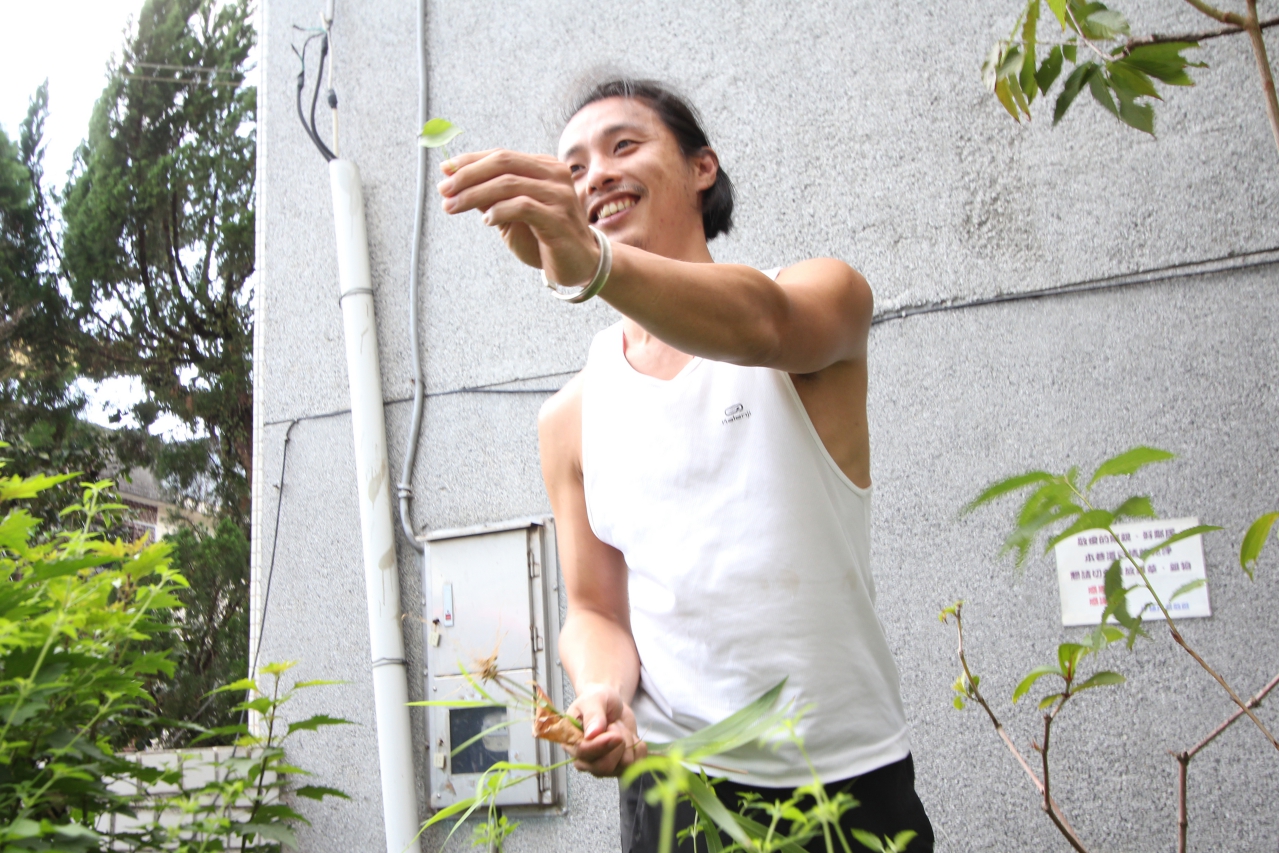
From international trade to national policies prioritizing agriculture and management of school farms, a common thread is the link between human beings and crops. However, putting ideas into practice and realizing values require tackling practical issues. CHEN admitted he had heard about bountiful harvests on a campus which was being sold to other communities in exchange for school supplies, which cast a shadow over his good intent.
Thus, there is a sense that “agricultural practice” and the “art of agriculture” are not simply about the growing and harvesting of crops, but furthermore relate to the many ideas and thought processes of daily life. Keting Kurt CHEN “puts his ideas into practice” abroad, going beyond “horticultural technologies” and “the art of selling” to more importantly a personal concern towards the tight-knit connections and interactions between humans and humans, and also humans and-plants in different cultures.
After his work with the technical corps in Palau, Keting Kurt CHEN applied for Lung Yingtai Cultural Foundation’s “Thought Mapping Program,” conducting research into the taro culture of Palau. Upon returning to Taiwan, he joined the research team for the “Lanyu ethnic plant research project” led by Dr. TUNG Gene-Sheng of the Taiwan Forestry Research Institute, studying the aboriginal taro culture of the Tao people. CHEN’s theme of combining plant research with art has been enriched through his ethnobotanist point of view, his time working at the Taiwan Forestry Research Institute, as well as his experience working and exhibiting at Nanmen Cho 323 at the Taipei Botanical Garden. Another way to see it is that having gone through graduate school, apprenticeship, and service experiences abroad, his relevant “professional” skills gradually developed, putting knowledge into practice and tying into his career. As for the initial desire for artistic creation, it too has been rekindled and germinates. CHEN has participated in many exhibitions over the years, working with on-campus resources and culminating towards the end of 2021 in the exhibition Explore Strange Tea Mountain: An Exhibition of the Local Studies Curriculum in Pinglin District (abbr. Explore Strange Tea Mountain)”.
On our way to investigate the Explore Strange Tea Mountain exhibition, we drove past the bustle of the city, rolling down the windows to take in the ever-thickening greenery, forgetting that we are headed in the direction of the exhibition. Next to the Pinglin District Office building is the Pinglin Agricultural Innovation Hub, occupying a building 2-stories high and the basement floor. Walking along the porch entrance with a strip of crop plantings on each side, the sign “Pinglin Garden of Symbiosis” greets visitors to the exhibition.
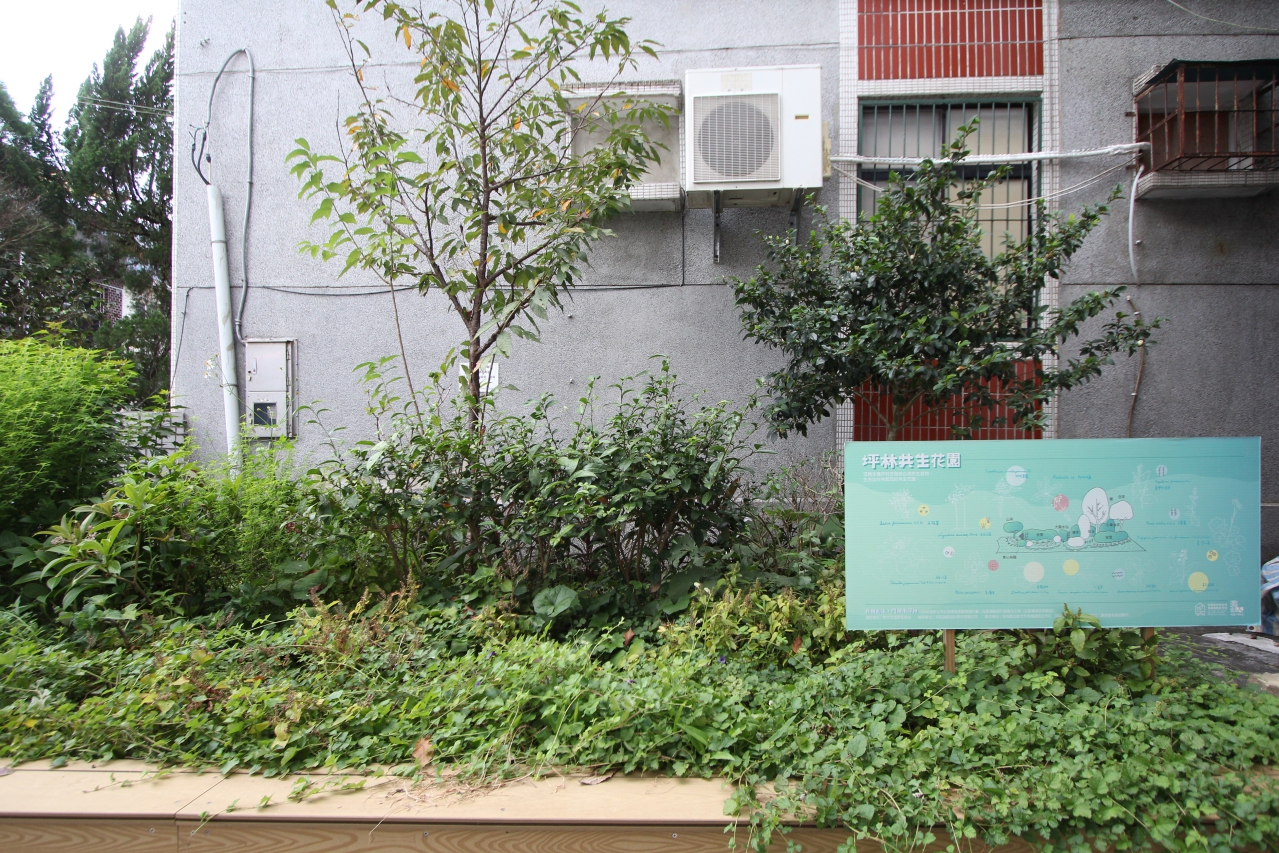 A collection of local tea plant cultivars and Taiwanese indigenous plants make up the “Pinglin Symbiosis Garden.” Photo by CHEN Han-Sheng © C-LAB
A collection of local tea plant cultivars and Taiwanese indigenous plants make up the “Pinglin Symbiosis Garden.” Photo by CHEN Han-Sheng © C-LAB
The Explore Strange Tea Mountain exhibition takes up the basement and ground floor. Walking along the corridor, we walk down to the basement level to a dimly lit space, the sound of dried leaves crackling under our feet, invoking the sense of being in a forest. Several bamboo sticks stand vertically on the floor, with iconic objects and information labels hung above them. These objects are monster masks and description tags made by participants of a workshop, and walking among them one is greeted with a sense of exploration, of tracking down or encountering a monster.
“Puddle Monster,” “Rain Listener,” “Tunnel Troll,” “Slow Mover,” “Tree Digger,” “Invisible Ranger” … a collection of names unheard of for ghosts and vivid eyewitness accounts including the time and location of the encounter, give audiences the “truest” form of proof. Yet these monsters are just local “annoyances” anthropomorphized through the imagination of Pinglin students. When the roadside gutters fill with rainwater, washing the debris from the road surface into the river, the gap along Guozhong Road becomes the “Rain Listener.” “Puddle Monster” lurks in low surfaces, potholes, or abandoned containers overlooked by humans, filling up all forms of man-made pockets of water. It implies a desire for a clean environment among the students. “Tunnel Troll” is a character that dislikes human land redevelopment, appearing near the Hsuehshan Tunnel and Beiyi Road near Pinglin, and was “created during an accident in the boring of the tunnel in which workers died.” The troll projects an air of disapproval and suspicion against land redevelopment. The “monsters” in Explore Strange Tea Mountain are actual events and realities of life, and a “true voice” of youthful innocence delivered through the exhibition, allowing these ineffable “everyday frustrations” to be shared and heard.
 Walking among the Explore Strange Tea Mountain exhibition’s dimly lit basement floor, one sees among the withered leaves many “monsters,” derived from actual events and realities of life in Pinglin. Photo by CHEN Han-Sheng © C-LAB
Walking among the Explore Strange Tea Mountain exhibition’s dimly lit basement floor, one sees among the withered leaves many “monsters,” derived from actual events and realities of life in Pinglin. Photo by CHEN Han-Sheng © C-LAB
 Walking upstairs to the ground level of the Explore Strange Tea Mountain exhibition, the windows flood the space with sunlight and the patterns of plants on the indigo print banners. Photo by CHEN Han-Sheng © C-LAB
Walking upstairs to the ground level of the Explore Strange Tea Mountain exhibition, the windows flood the space with sunlight and the patterns of plants on the indigo print banners. Photo by CHEN Han-Sheng © C-LAB
Walking up the stairs we come to the ground-level exhibit, with sunlight streaming in the windows on one side. Large indigo printed cloth banners comprise the main visual elements of the exhibit, with each banner corresponding to a wooden windowed box like those used for showcasing insect specimens. The audience immediately realizes that the patterns on the indigo print banner are “marks” made by the participants of the exhibition through splicing, snipping, sculpting, and transforming the objects placed inside the boxes.
On one of the indigo print banners is a full-body image of a nurse surrounded by children’s faces. One of the nurse’s eyes contains an image reminiscent of ultrasound images of the fetus. She is locally known as “Grandma Pinglin, the deliverer of life in Pinglin.” CHEN shared the story of Grandma TSAI Chiao, the licensed midwife of Pinglin.
“The Qing-era Tiger Tablet, Dipteris conjugate fern, the stacked stone temple of the Earth God… are scattered along a winding path,” a participant of the exhibition lays down the significance of the Tamsui-Kavalan Trails on the banner, and through these icons bear witness to Pinglin’s historical development. As each place is inhabited by actual people, the preservation of their footprint, the construction of the self, the understanding of the self, and the portrayal of the self, all serve to help others understand. The Explore Strange Tea Mountain exhibition through its involvement of local inhabitants, constructs a unique story and memory of Pinglin, so that it’s not just a place in name, but an actual living space of life. In contrast to the legends of the monsters downstairs, the ground floor exhibit provides a continuation of the story through the lands’ experiences and memories.
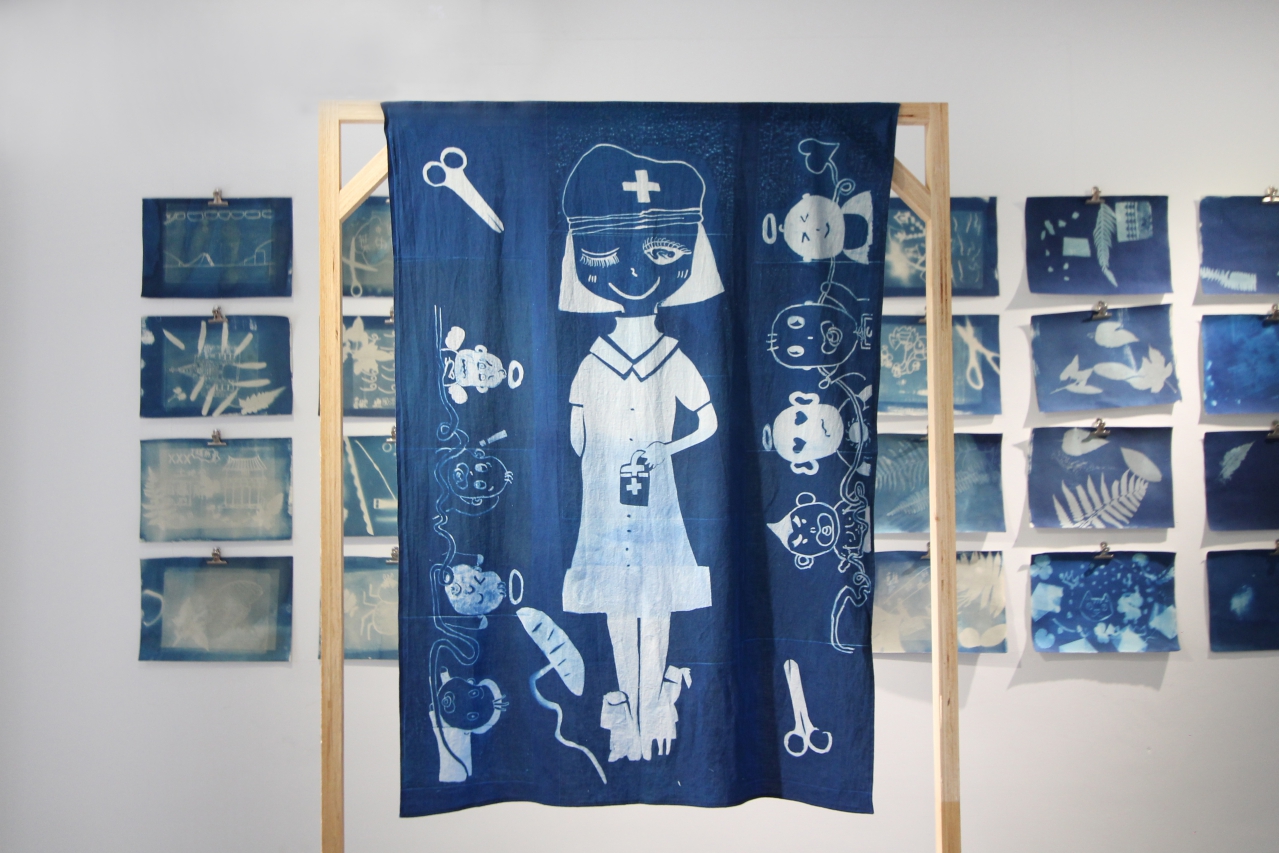 The indigo print imagery tells the story of the local licensed midwife TSAI Chiao. Photo by CHEN Han-Sheng © C-LAB
The indigo print imagery tells the story of the local licensed midwife TSAI Chiao. Photo by CHEN Han-Sheng © C-LAB
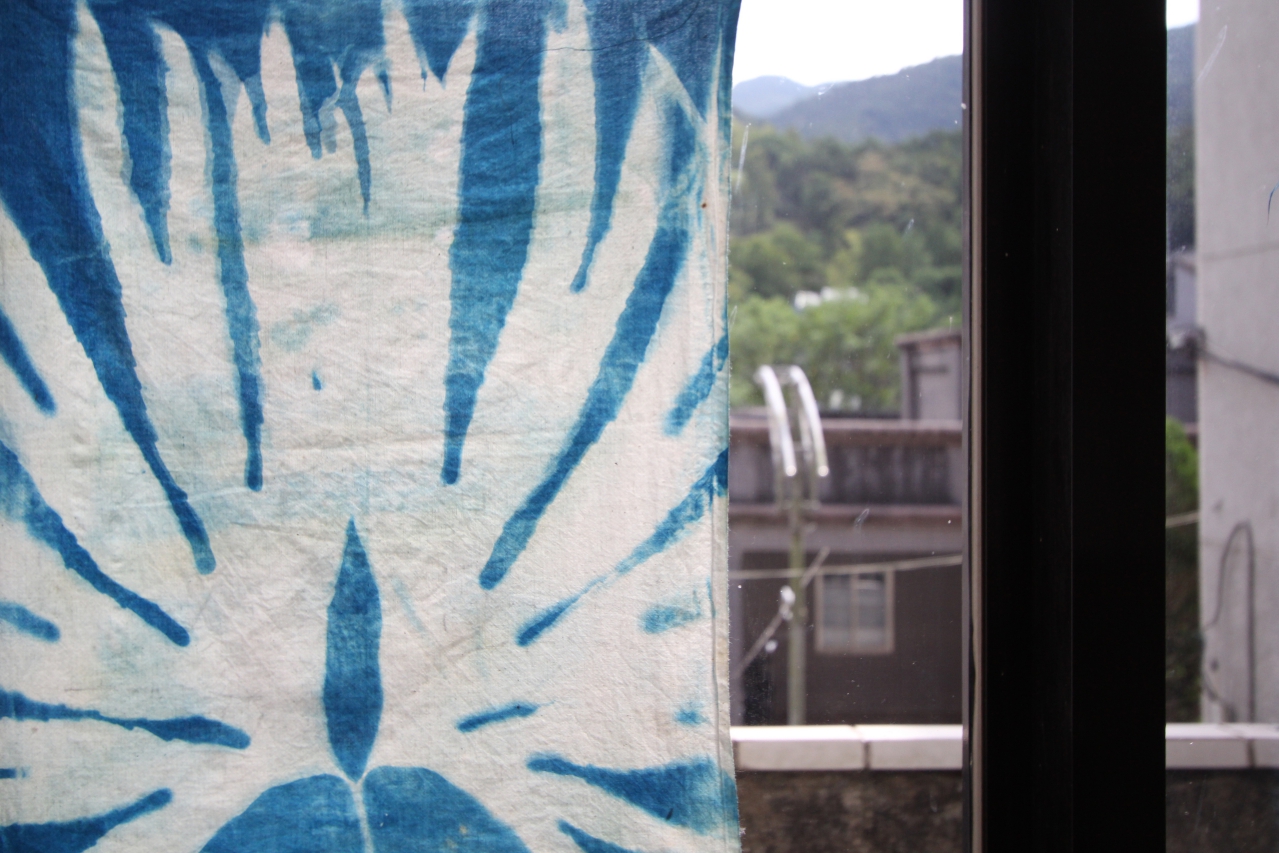 The Dipteris conjugate fern is found in many parts of the Tamsui-Kavalan Trails, thus being chosen as a symbol for the historic trail. Photo by CHEN Han-Sheng © C-LAB
The Dipteris conjugate fern is found in many parts of the Tamsui-Kavalan Trails, thus being chosen as a symbol for the historic trail. Photo by CHEN Han-Sheng © C-LAB
One’s perception of hometown and home place alters with his location and status. Living in Taiwan, the modest-sized island has been divided into the north and the south, just as Taipei City has been gentrified into uptown and downtown areas. Yet in his return to Taiwan from abroad, what made Keting Kurt CHEN decide to return to Pinglin and set up the Collectors Co-Space?
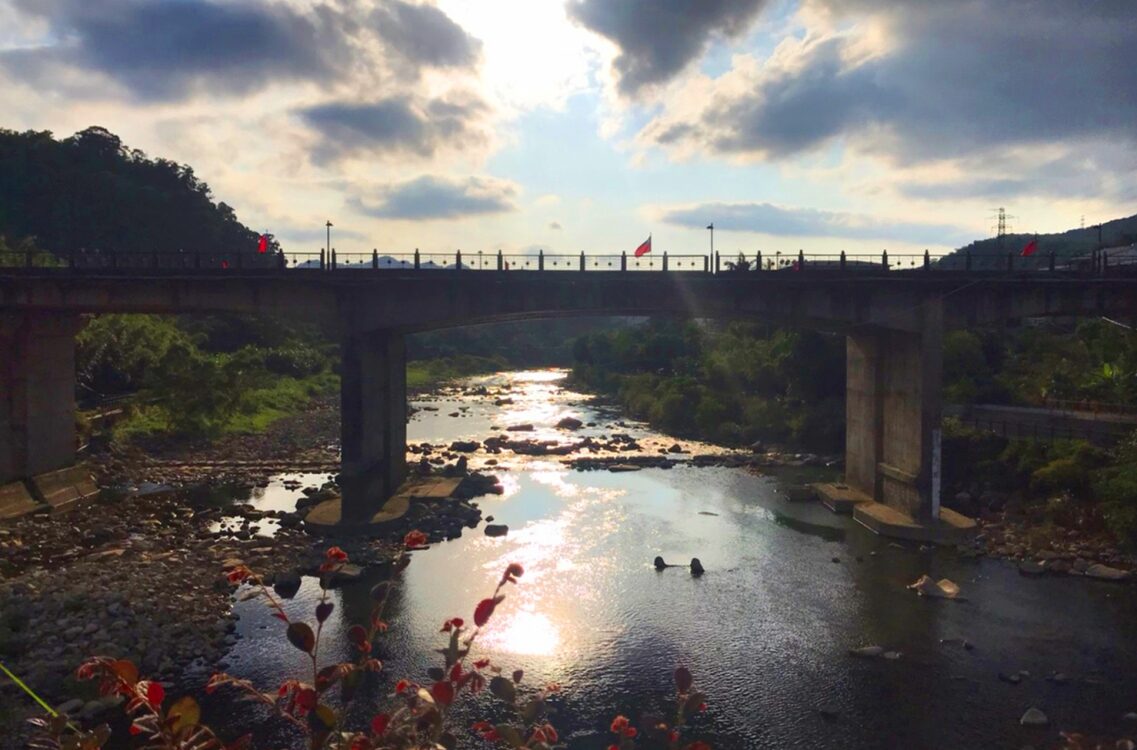 Keting Kurt CHEN hopes that by returning to his native Pinglin, a severed connection with people, plants, and the environment could redevelop. Photo by CHEN Han-Sheng © C-LAB
Keting Kurt CHEN hopes that by returning to his native Pinglin, a severed connection with people, plants, and the environment could redevelop. Photo by CHEN Han-Sheng © C-LAB
“Perhaps it’s because having worked in Saint Vincent and the Grenadines and the Republic of Palau, seeing the local’s way of living and practicing daily the basic skills that make us human, such as to plant and to forage. There are many abilities in life which we should uphold and practice as human beings,” CHEN shares his thoughts and beliefs, and why he decided to return to Pinglin. “The conveniences offered by society meant the loss of basic life skills, or even the ability to walk or move, so my initial reaction was to return to a simpler place of living.” Only after finishing his work at the Taipei Botanical Garden did CHEN “return home” and draw closer to “his ideal state of life.”
“I now see it as a good thing I haven’t started out in fine arts,” says CHEN. His education process seems beset with compromises, but along the way, many seeds were sown. The seeds of artistic creation we see in CHEN are not so much as “giving up” or “picking up,” but more of a return to Pinglin for a reconnection with humanity which can only be achieved through continued human, plant, and ecological exchange.